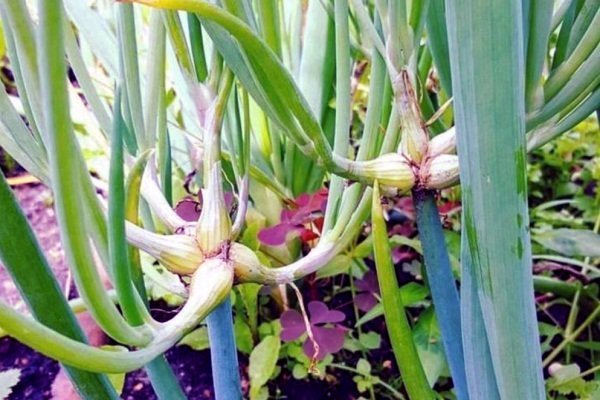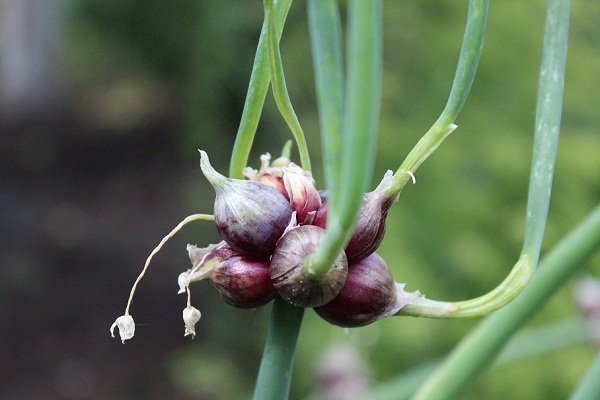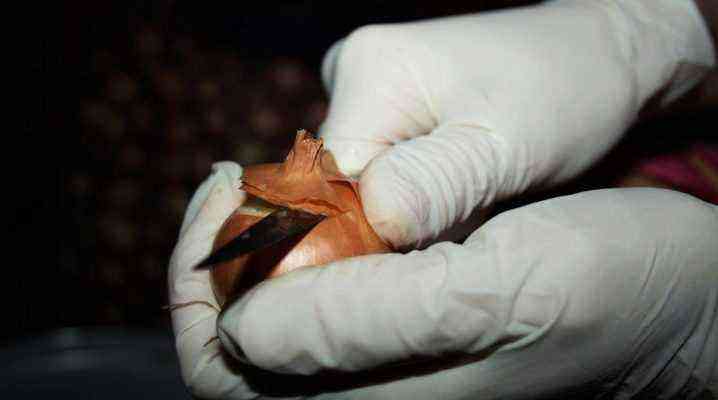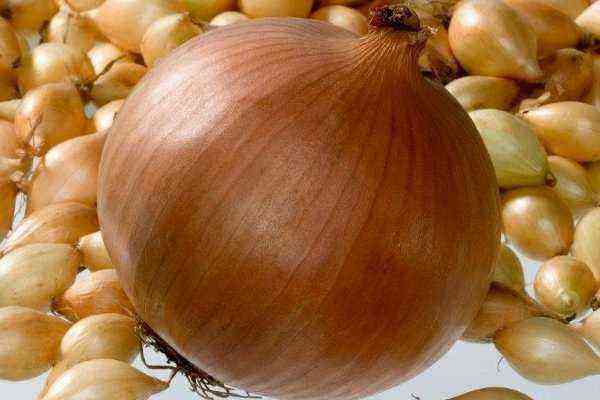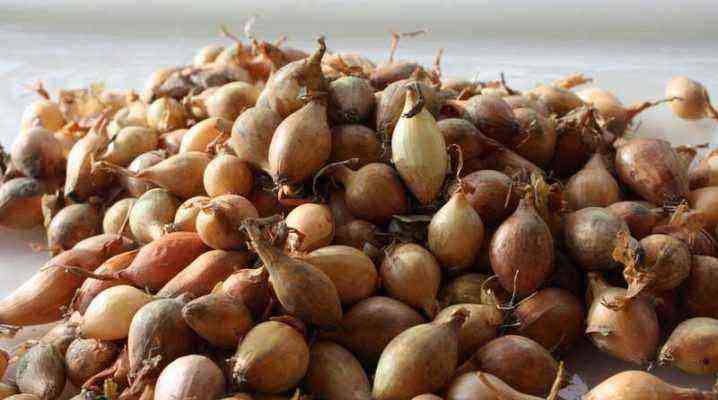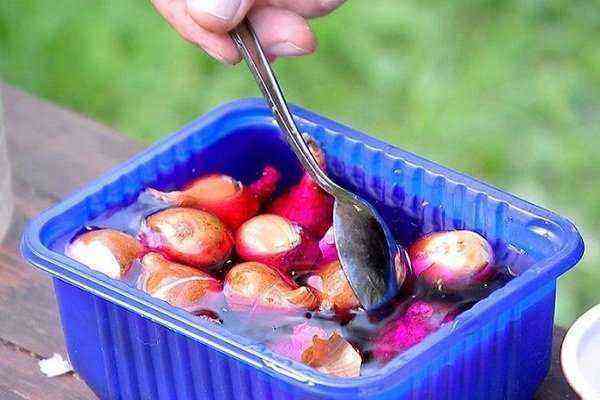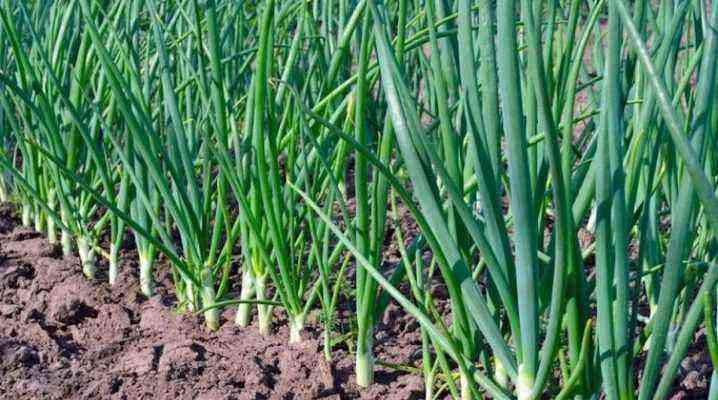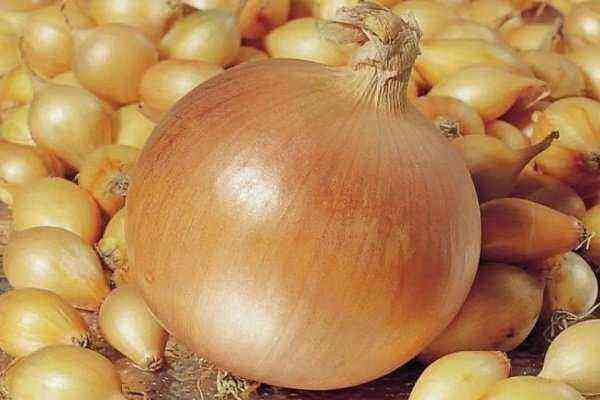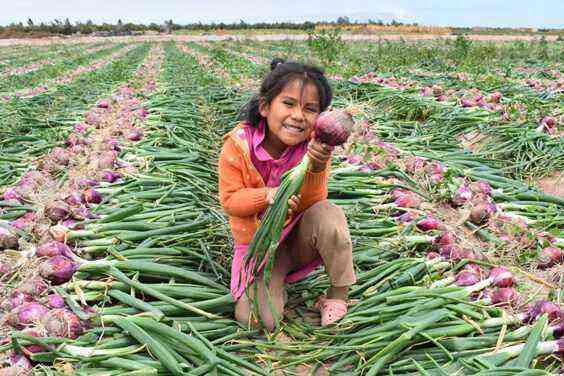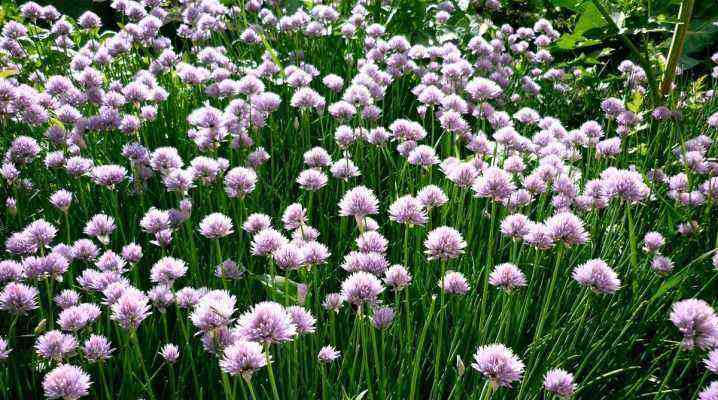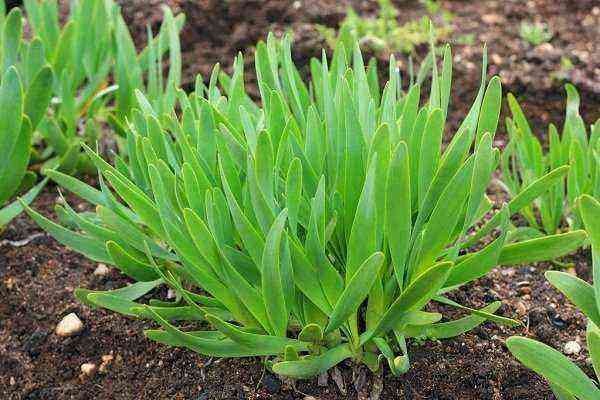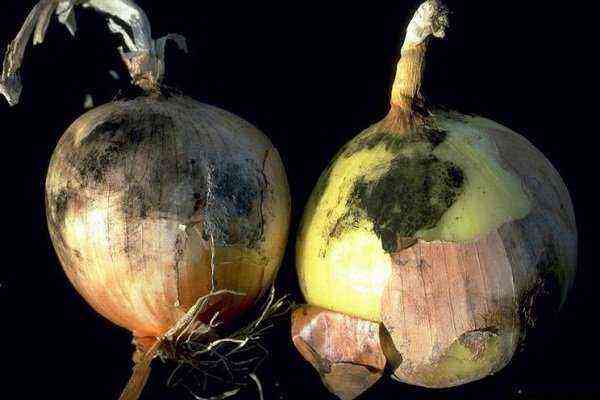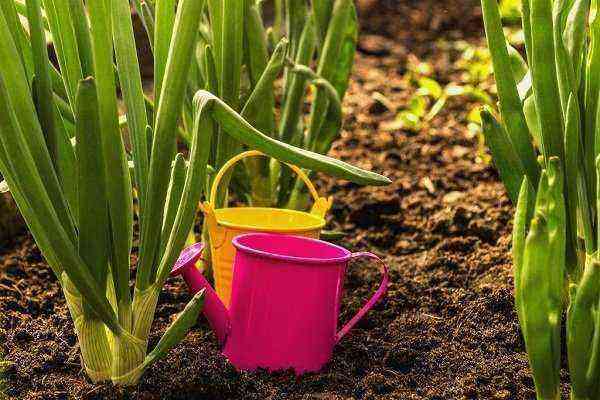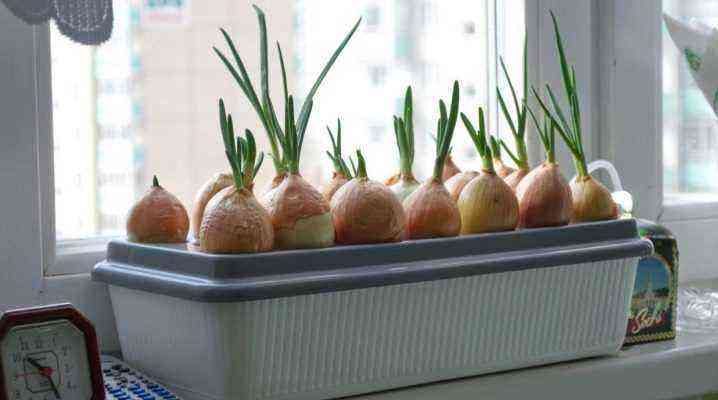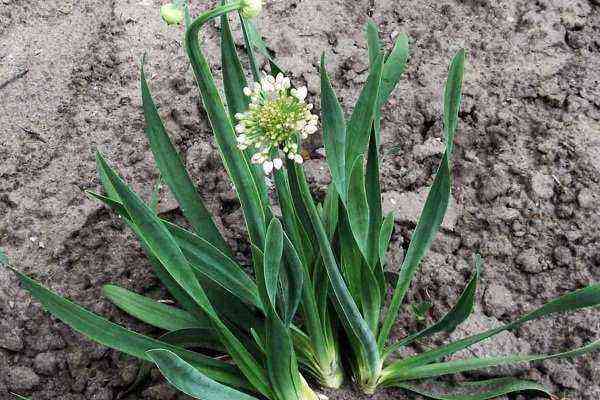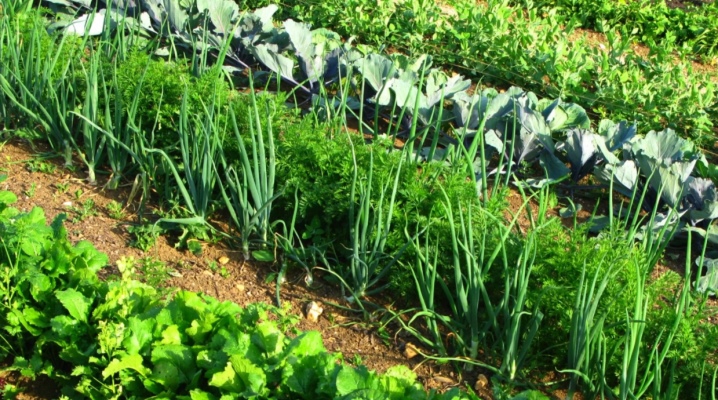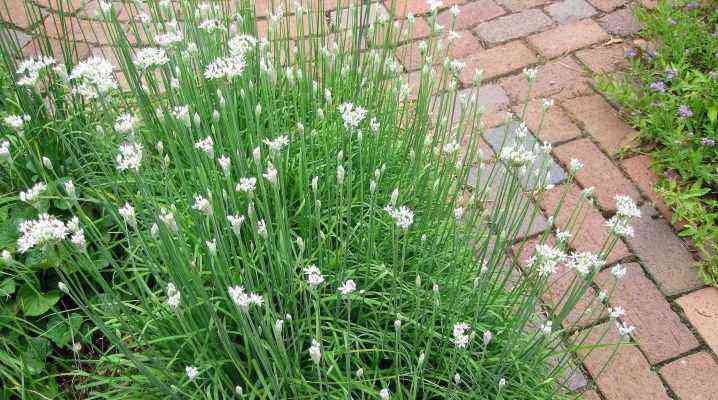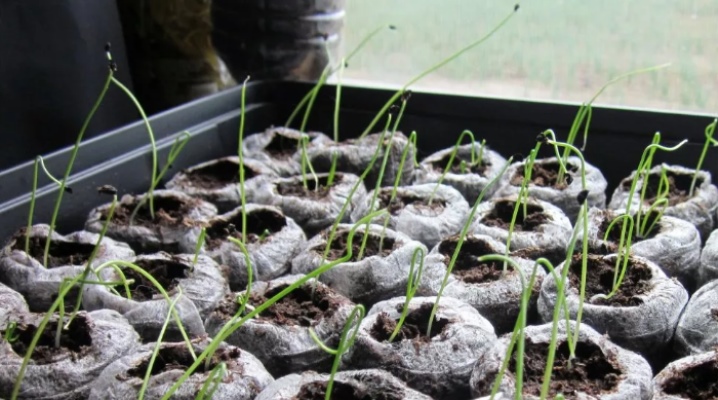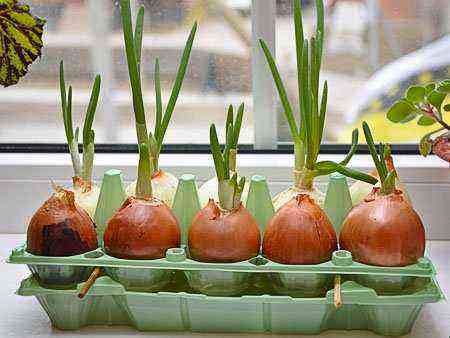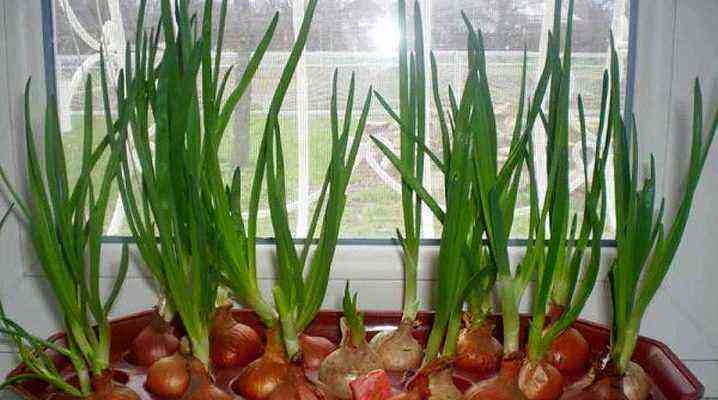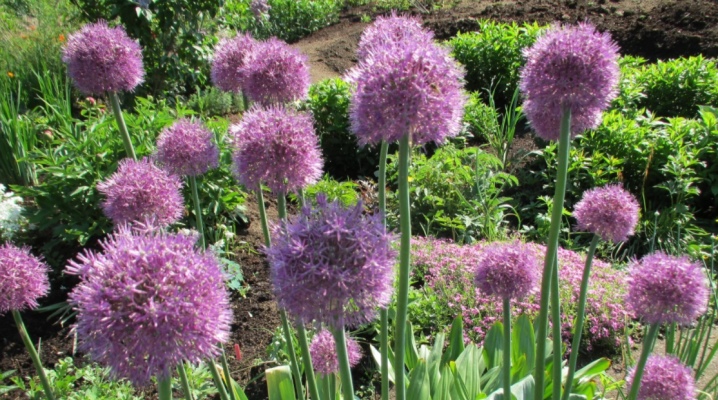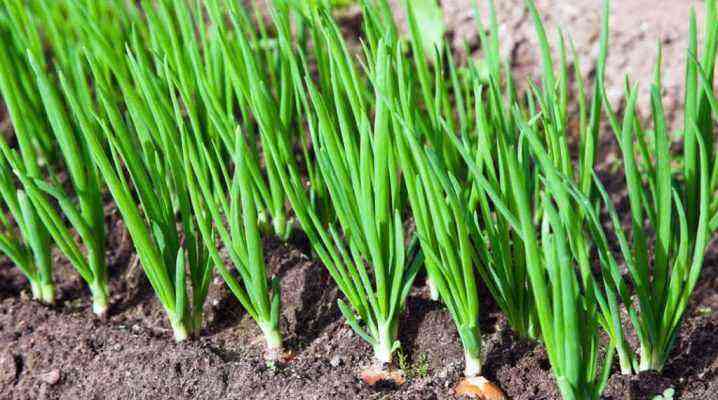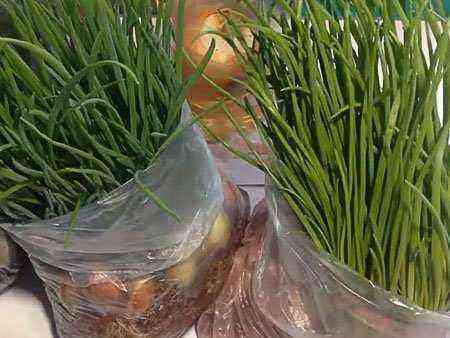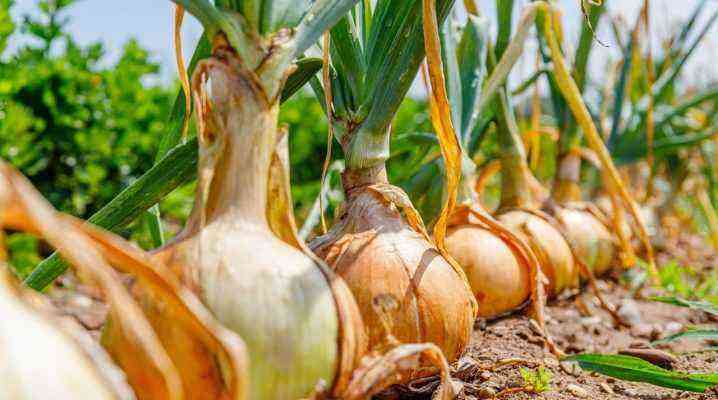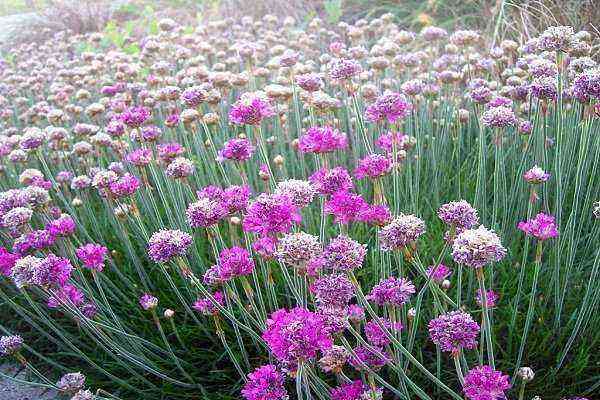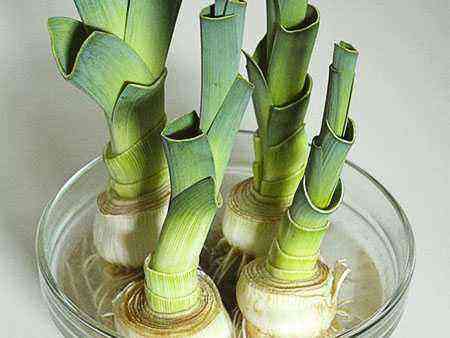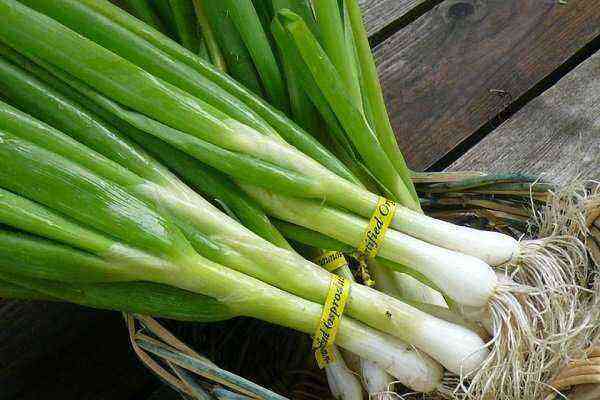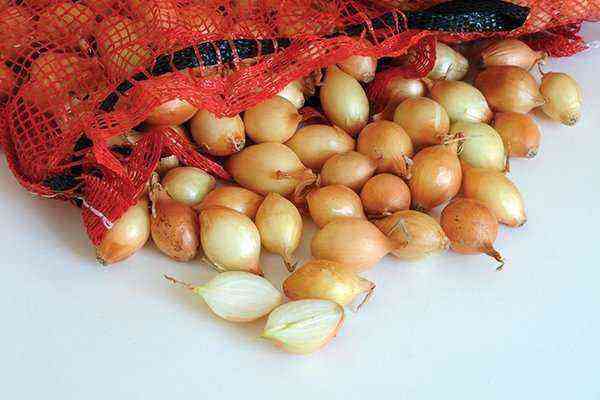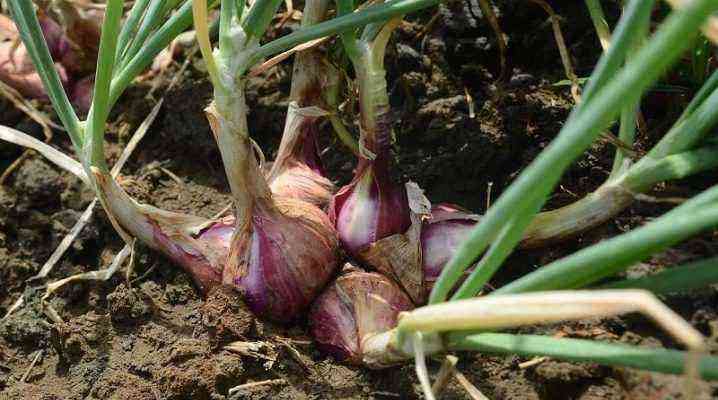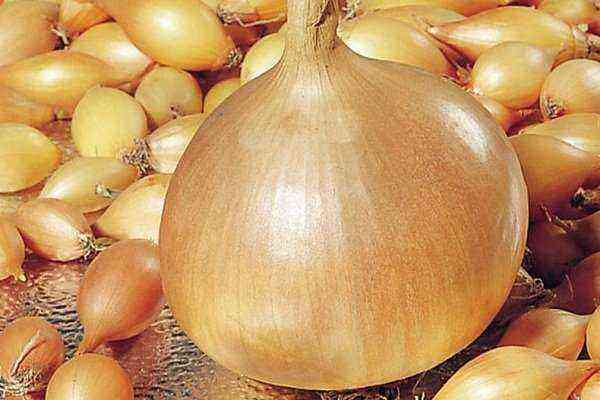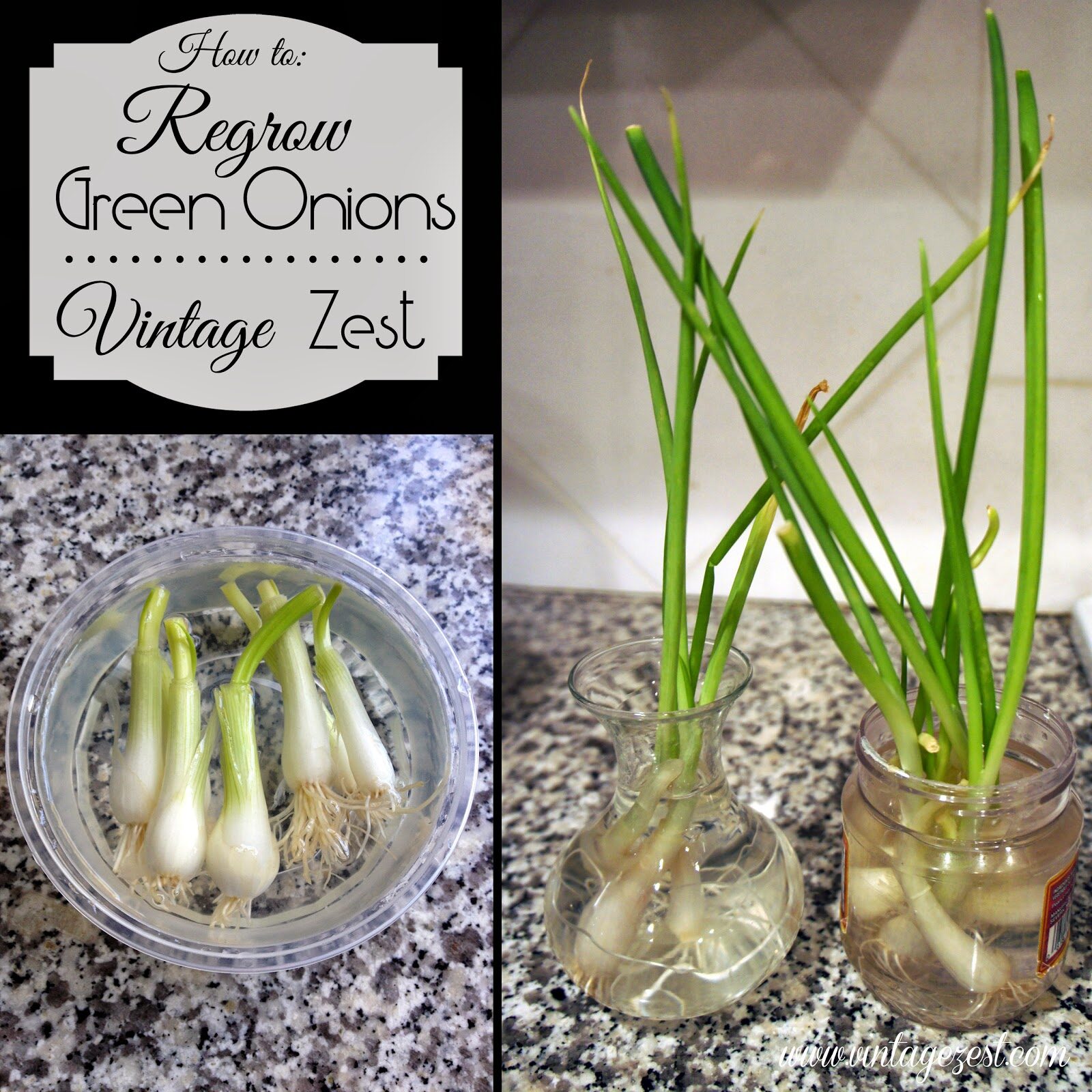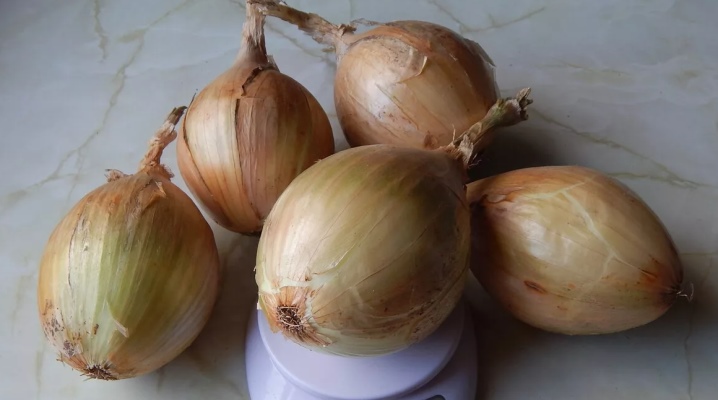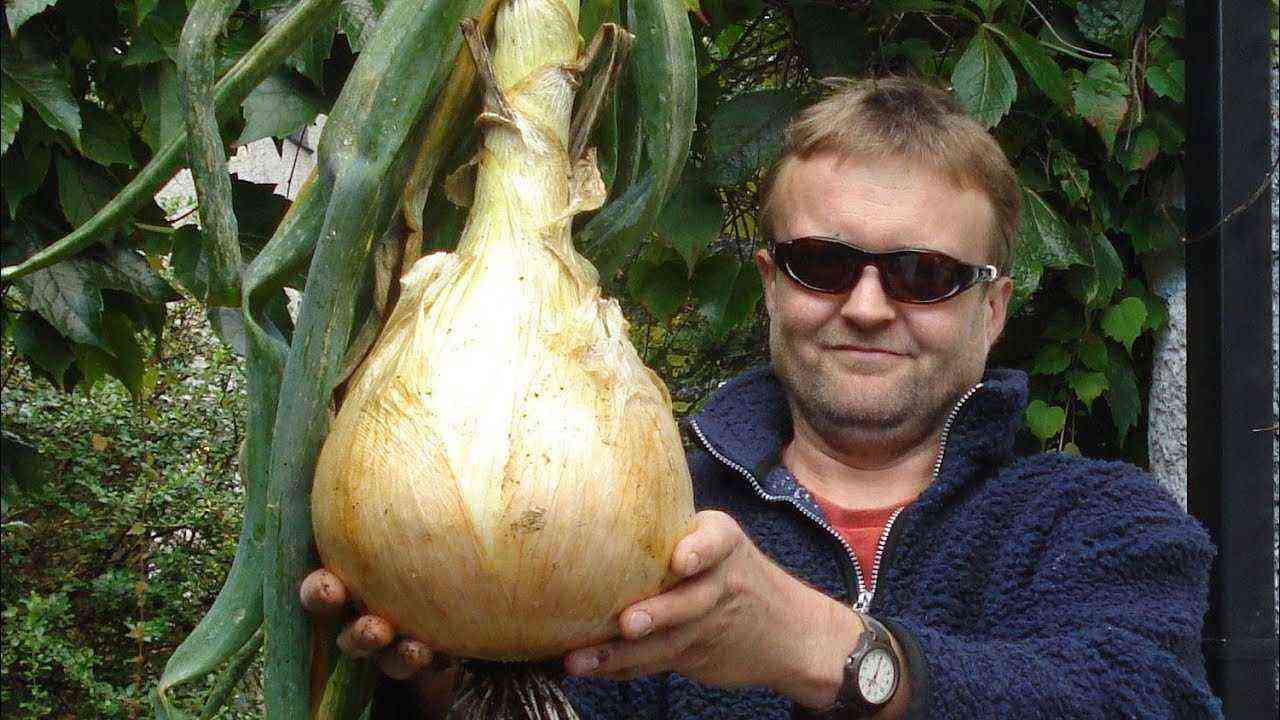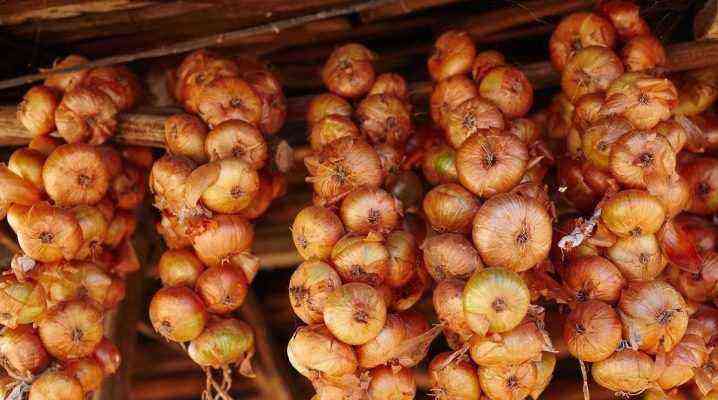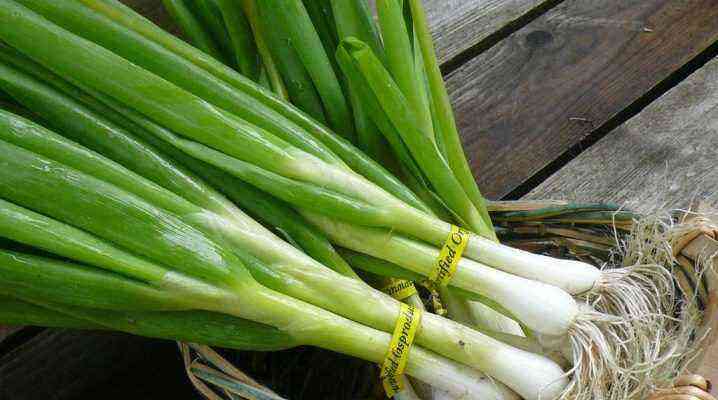The multi-tiered bow is also known as the Viviparous, Horned, Egyptian. The plant is thought to have originated in China. The peculiarity of this culture is an unusual appearance: not inflorescences are formed on the arrows, but air bulbs that hang above the ground. They form several successive tiers.
Plant characteristics
Tiered onion is a hybrid culture. The plant does not produce seeds. It is propagated by bulbs formed on the arrows.
Tiered onion is a perennial plant. Its main vegetative organ is the underground bulb. After planting in the soil, a large rosette with dark green leaves up to 40 cm high grows. In the first summer after planting, a peduncle is formed.
Small bulbs appear right on the flowers, which are placed in 2-4 tiers. Up to 10 onions appear on the first of them, less on the subsequent ones. If there is a fourth tier, then there are no more than 4 fruits the size of oatmeal on it.
The underground bulb is divided into several more subsidiaries every year. After 3-4 years, a powerful nest and a bush of greenery are formed, which consists of 20-30 stems.
Distinctive features of culture:
- onion leaves are tubular, reach 35 cm in height;
- during the growing season gives up to 3 arrows with air bulbs 1 m high;
- bulbs formed on arrows do not require a dormant period, so they can be grown at any time;
- above-ground small bulbs are painted yellow, purple or brown;
- underground bulb ripens in September;
- the weight of one underground bulb is 40-50 g;
- onions give a lot of juicy greens, which retain their taste until the first frost and do not become tough;
- the culture is frost-resistant and tolerates temperature conditions down to -50 degrees under a small layer of snow (up to 20 cm);
- the root system does not die off in winter;
- the culture grows in one place without losing the formation of abundant green mass up to 6-7 years, subject to proper care;
- the plant is resistant to common pests that usually affect onions – thrips and onion flies;
- the culture has a developed root system, which goes to a depth of 50 cm.
Under normal conditions, a multi-tiered onion reproduces only vegetatively, for which small onions formed on the arrows are used.
Common varieties
Popular crop varieties:
In Russia, not too many varieties of multi-tiered onions are cultivated. Here, this plant became widespread only at the end of the 20th century.
Growing conditions
Viviparous onions can be grown in both the northern and southern regions of the country. This can be done in open and closed ground.
Requirements for the site and soil:
- so that green shoots do not make you wait long, it is recommended to choose an area open to the sun, which is well warmed up by the sun’s rays and protected from drafts;
- the site should be on a hill so that moisture does not stagnate in the ground;
- multi-tiered onions love light soil, the composition of which allows air and moisture to pass unhindered;
- heavy and acidic soil is not suitable for culture: development will slow down in it, the green feather will grow weakly;
- if the soil is acidic, limestone, gypsum or wood ash should be added to it;
- too heavy soil with a high content of clay can be improved by adding humus or sand;
- before planting, the soil must be dug up, weeds removed and fertilizers applied;
- both organic fertilizers (for example, humus) and mineral fertilizers (superphosphate) are well suited for top dressing.
It is better to plant multi-tiered onions in the beds where potatoes, cabbage, zucchini, cucumbers or beets were previously grown.
The best time for planting onions is the second half of August and the first half of September. At this time, the culture will have time to take root and endure the winter cold well, and in the spring it will begin to grow at a rapid pace.
With the onset of spring, fallen and rotten leaves should be removed from the beds, as they act as a beneficial environment for the development of pathogenic microorganisms that can harm the vegetable crop.
The highest yield can be expected in 2-3 years of onion growth. At 5-6 years of development, the culture requires transplantation or thinning. This is necessary, because with the formation of a large number of basal bulbs, underground bulbs become too small.
Landing
The material intended for planting must be carefully selected. To avoid fungal diseases, the bulbs should be put in a weak solution of potassium permanganate and left for 3 minutes, then dried.
For planting in the ground, air (longline) or underground bulbs are used. If the first ones are used, then it is better to take those that were placed on the first and second tiers.
The crop should be planted in grooves watered with water to a depth of 3-4 cm. The distance between each bulb should be 15-20 cm.
Planting material should be sorted by size in advance and each group should be planted in a separate row.
To obtain seed material, the bulbs are planted in 1-2 rows at a distance of 10 cm. In the spring, the beds are thinned out, leaving only the strongest plants. Between them you need to leave a distance of 20 cm.
After planting, you need to water the beds to speed up the process of root formation.
If onions are grown in boxes (in an apartment or greenhouse), then the heads should be planted tightly, one after another, and watered abundantly.
Outdoor crop care
If you follow all the recommendations for growing a plant, you can get a rich harvest.
Watering
Culture needs moderate watering. With an excess of moisture, tender bulbs rot.
The beds are moistened as the top layer of the earth dries. A lot of liquid is not needed: pouring a large volume under the root can worsen the taste of the onion.
For irrigation, it is recommended to use warm water. The recommended frequency is 2-3 times a week.
During the period of active growth, the beds should be watered often and plentifully. To get juicy and fresh greens, the leaves of the culture must be periodically sprayed with water.
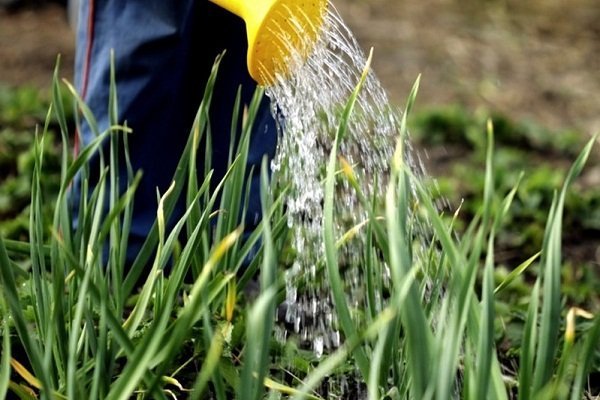
Additional fertilizing
In the spring, after the snow melts, mineral fertilizers are applied to the ground:
- potassium chloride;
- ammonium nitrate;
- superphosphate.
Proportions – 10 g of substance per 1 sq. m.
With a lack of nutrients, repeat the manipulation after 2-3 weeks.
In the second year of growth, the crop must be fed with a complex mineral fertilizer, which consists of potassium, phosphorus and nitrogen substances (15 g, 40 g and 20 g each, respectively).
After each cutting of the green mass (about once every 3 weeks), it is recommended to feed the plants, alternating organic matter with complex mineral compounds.
Ash (1,5 cups of wood ash per 10 liters of water), bird manure (mixed with water in a ratio of 1 to 1) is suitable as an organic fertilizer.
Weeding and loosening
Weeding allows you to get rid of weeds that draw nutrients from the soil and become bait for some pests of the crop (for example, onion flies). It is carried out as the grass grows.
Loosening ensures the supply of oxygen in the required volume to underground bulbs. This event is held 2-3 times a season.
Garter
This manipulation is necessary because the arrows of a multi-tiered bow are unstable and prone to lodging due to the weight of the air bulbs. To prevent this, you need to install stakes on the site and pull the twine between them – so that it is above the middle of the arrows. Tie the upper tiers of the plant into bundles, fasten.
Pest and disease control
The culture is susceptible to diseases such as downy mildew and downy mildew. To prevent their development, you need to spray the plant with a weak solution of Bordeaux liquid. Repeat the manipulation after 7 days. Also, as a remedy, you can use a solution with soda ash, dissolving a tablespoon of the substance in a liter of water.
The main condition for preventing the appearance of insects and other pests of multi-tiered onions is the regular removal of drying or rotting feathers. The greatest danger to this crop is the onion fly and onion weevil.
Harvesting and storage of crops
The leaves are harvested early: the first feathers can be cut already in April, when their length reaches 25 cm. They need to be cut at a level of 5-8 cm above the neck of the underground bulb.
Bulbs that have formed in tiers are harvested from late July to mid-August. By this time, they acquire a purple hue interspersed with brown. To remove them, you need to carefully cut the arrow with bulbs 5 cm from the ground with a sharp knife.
Part of the resulting crop can be used for culinary purposes, another part for storage and subsequent transplanting into boxes in the winter. Also, onions can be planted in the soil in the spring to get young juicy greens.
Gardeners are advised to put such onions for storage in pits or cellars. It is also stored in attics, in unheated rooms, in a layer of sand, at a temperature not lower than -2 degrees. The harvested crop can also be folded into the refrigerator or freezer, dried beforehand and packed in paper bags. Not separated bulbs retain their appearance and taste much longer.
In warm rooms, the collected bulbs begin to germinate and eventually die.
You can learn about the features of growing multi-tiered onions and its beneficial properties from the following video:
A multi-tiered onion has an unusual appearance and gives a lot of green above-ground mass – these are the hallmarks of the variety. To get a good harvest, you need to provide the culture with the necessary conditions for planting and growing.
